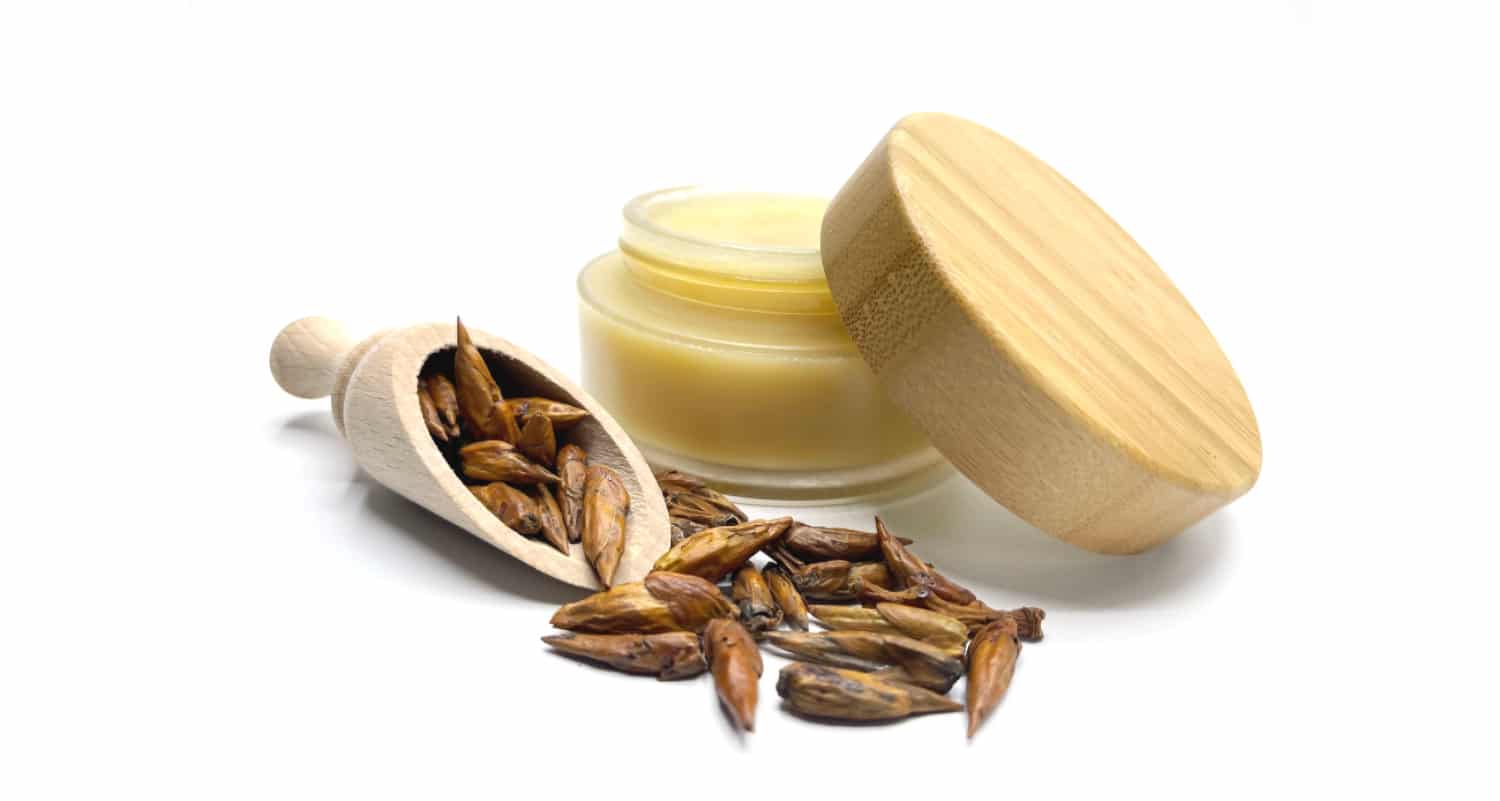One of my favorite early signs of the impending spring is the buds fattening up on the cottonwood trees around our house. Cottonwood buds have an extra special place in my heart because they’re usually the very first wildcrafting I get to do after a long winter. Hello spring fever! There’s still snow on the ground, but if I squeeze a bud and get really close, I can already detect a hint of the fragrant resin… spring is coming (woot! woot!)
Cottonwood buds (Populus spp.) are bursting with a wonderful, sticky red resin that many herbalists lovingly refer to as an “herbal band-aid.” Its anti-fungal, anti-microbial, anti-inflammatory and analgesic (pain relieving) properties make it a top notch first-aid herb that deserves a place in every herbalist’s medicine cabinet (and perhaps a place in their daily skincare routine!)
Each spring, I collect a jar or two of these divine smelling buds and infuse them in oil. You probably already know which oils I typically use. I have a big jar of cottonwood bud tallow, and smaller jars of jojoba and squalane.
Collecting cottonwood buds is delightfully messy business. Last year, a friend and I went hiking around her property by the lake and filled a jar along the way. By the time we were done, we looked as though we’d just left a murder scene with our sticky, bright red fingers!
An added bonus to working with cottonwood buds, is their sticky resin acts as a very effective fragrance fixative, so when you use your salve, the scent lasts and lasts. You may have sticky fingers stained red, but you smell ah-mazing! Balm of Gilead doubles as a wonderful, long-lasting herbal perfume. ♥
Fortunately, the sticky resin comes off easily with a bit of rubbing alcohol or hand sanitizer; you just have plan ahead a little bit if you’re going to be caught “red handed” away from home.
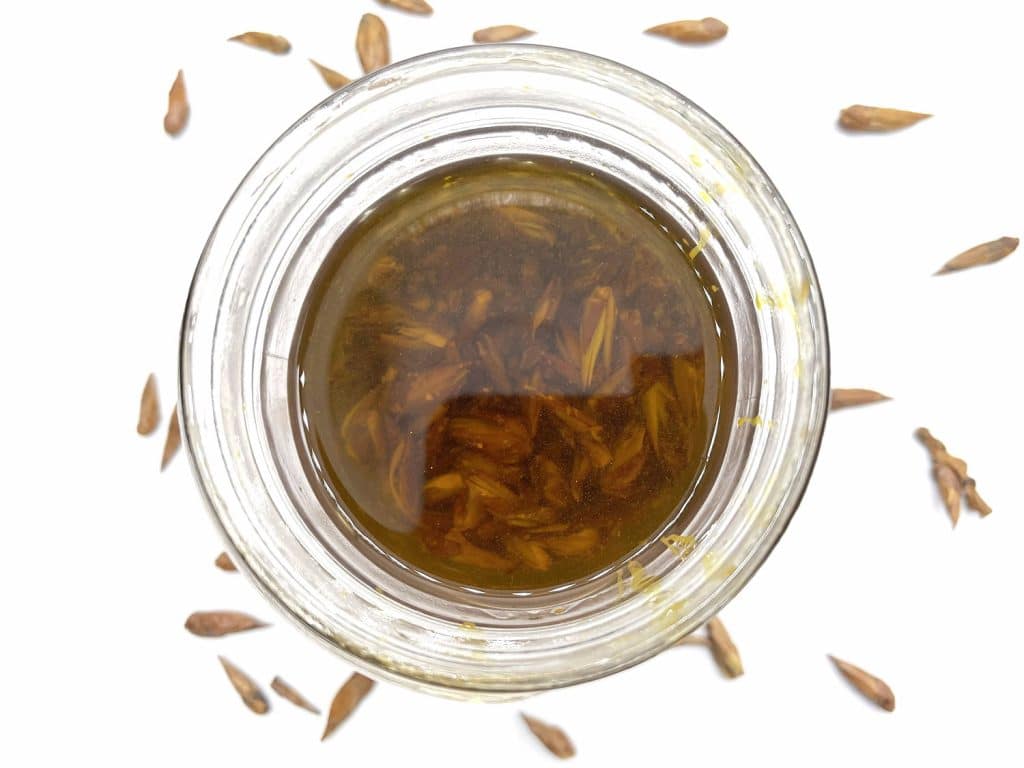
A side-note about wildcrafting ethics
Something important to be mindful of, is to never take too many buds from any one tree. This is a basic rule of ethics in wildcrafting: sustainability. Don’t take more than you need. Keep your footprint small and strive to leave the place as you found it. Even better, look for fallen branches from which to gather buds. The branches are quite brittle, and if you’re very lucky, a windstorm might deliver the highest branches (with the fattest buds) right to your doorstep.
Remember, the buds become leaves, and the trees need their leaves to collect energy in order to survive the winter. Also, avoid taking the tree’s terminal buds (the bud growing at the tip of each stem) as these are the points from which the tree will put on new growth.
Always be respectful of the plants and a good steward of the land, so they will always be there for the next person who needs them.
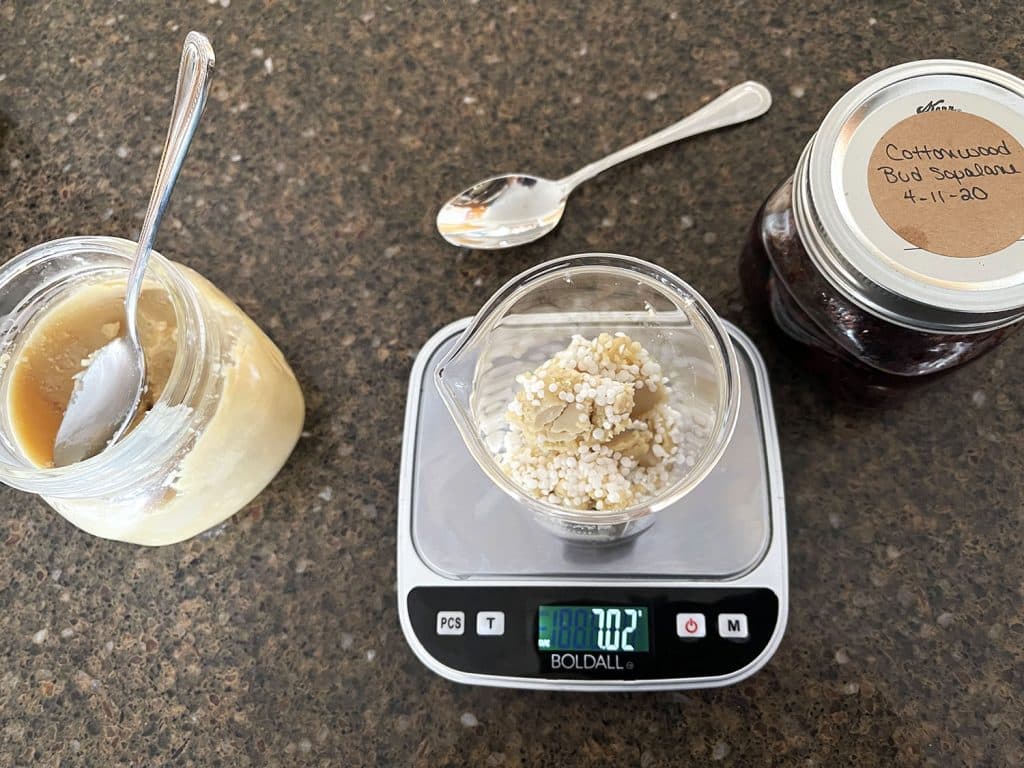
Balm of Gilead
The name “Balm of Gilead” comes from a reference in the Bible to a resinous substance used for healing. It is thought that the biblical balm may have been made from cottonwood resin.
There are plenty of Balm of Gilead recipes out there, but this one is a bit different because it uses tallow and also because it incorporates cottonwood bud-infused honey.
The medicinal resin of the cottonwood bud extracts well in honey. Did you know that bees collect the resin of the cottonwood bud to make their propolis, which they use to seal up their hives and protect them from invaders and disease?
Isn’t nature just marvelous?? ♥
Balm of Gilead captures cottonwood bud resin’s anti-inflammatory and pain-relieving properties. It’s used topically to treat everything from skin irritations to muscle aches and joint pain.
To make cottonwood bud infused honey, first gently warm the honey in a water bath (never use high heat or you’ll destroy the enzymes and many health benefits of your raw honey). Hopefully your honey came in a glass container, but if it didn’t, transfer to a glass jar before exposing it to heat. You don’t want to infuse plastic chemicals into your herbal medicine!
Meanwhile, fill a clean glass jar 1/2 to 2/3 full of fresh cottonwood buds. When your honey is thin enough to pour, remove it from the water bath and fill your cottonwood bud jar to the top. Replace the lid and place the sealed jar back in your warm water bath and keep it warm for 5 to 7 days before straining out the plant material.
By the way, the cottonwood bud-infused honey is also wonderful for coughs, sore throat or laryngitis, so you’ll want to make extra!
A few notes about the recipe
Water-based honey and oil-based, um… oil do not mix without a little help. This is why my recipe calls for cera bellina wax instead of beeswax. Cera bellina is a hydrophilic derivative of beeswax with co-emulsifying properties, which make adding a small amount of honey to an otherwise 100% oil-based salve possible.
And while it’s true that honey is a water-based ingredient, without any additional added water, it’s self preserving in this formula, so there’s no need for a preservative.
This recipe calls for each of the oils in the recipe to be infused. You do not have to do this. Feel free to infuse one, two or all of them using either the warm/solar or hot infusion method, depending on how quickly you want the infused oil to be ready. For maximum potency, consider doing an intermediary oil infusion using a bit of high-proof alcohol.
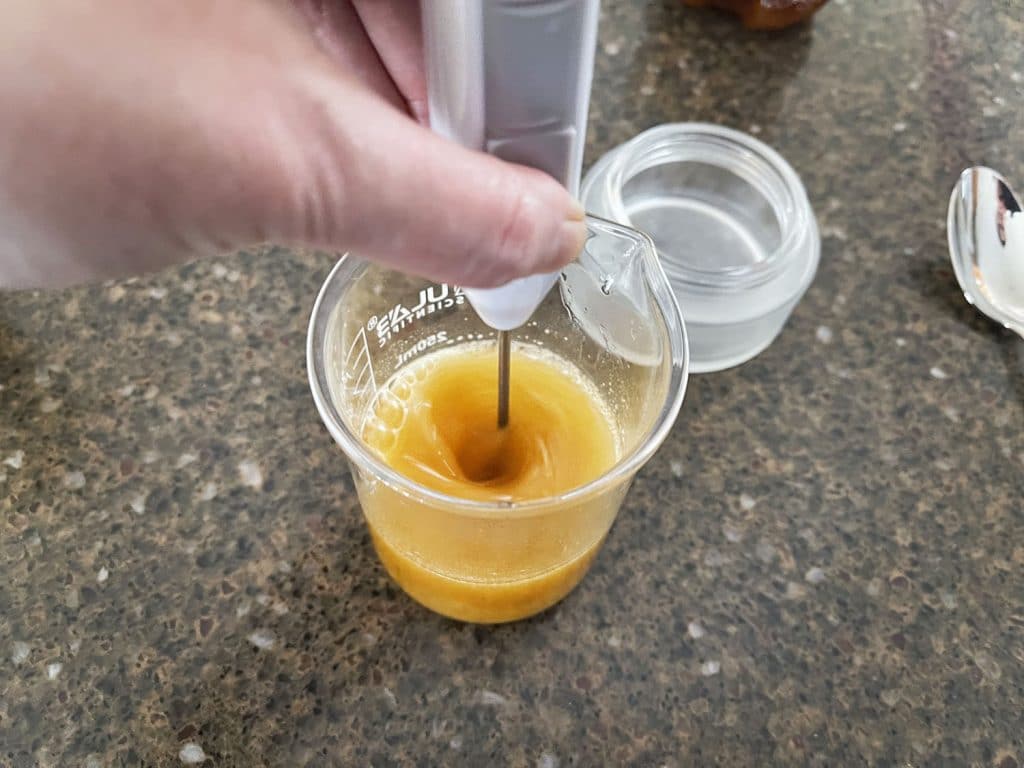
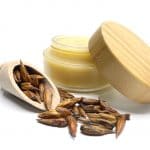
Balm of Gilead Salve with Tallow & Infused Honey
5 Stars 4 Stars 3 Stars 2 Stars 1 Star
No reviews
Ingredients
40 g tallow, infused
7 g cera bellina wax pastilles
30 g jojoba oil, infused
14 g squalane, infused
9 g raw honey, infused
Instructions
- Over a gentle heat source, melt tallow and cera bellina wax until liquified. You should not see any traces of wax pastilles in the oil.
- Add jojoba, squalane oil and honey, stirring to combine.
- Pour the mixture into small cosmetic jars or a 4-oz mason jar.
- Allow to cool completely and set before capping to prevent condensation on the surface of the balm. If the room is warm, cool in the refrigerator to prevent crystallization.
Notes
If you live in a very warm climate, you may wish to increase the wax slightly to create a firmer salve.
In this recipe, we use cera bellina wax instead of beeswax, because it has emulsifying properties while beeswax does not. If you don’t have cera bellina, you can try subbing emulsifying wax.
Any leftover buds can be stored in the freezer until you’re ready to use them.
I recommend glass containers for storing homemade lotions and potions. Glass doesn’t leach chemicals and it’s easier to clean/sterilize after the product is used up and you’re ready to refill.
If you do choose to use a plastic container, be aware that essential oils tend to react with plastic, so even if you can get it “clean,” your container will likely not be reusable.

